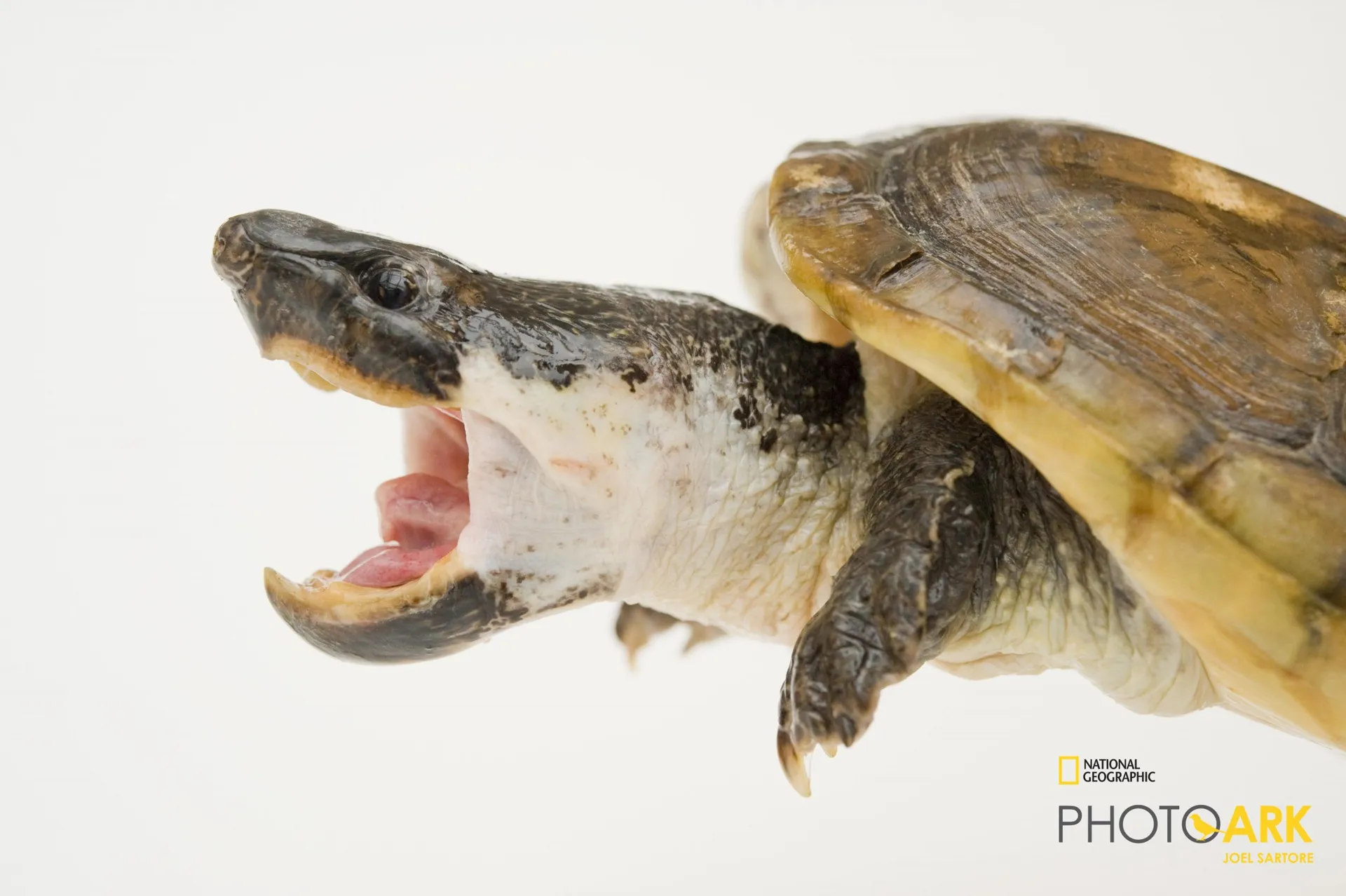Thanks to his award-winning images regularly gracing the pages of National Geographic, most people probably know Joel Sartore best as a photographer. For the last 15 years, however, one of Sartore’s main career ambitions has more closely resembled the work of a lobbyist.
And his client? Basically all the animals on the planet.
“About 15 years ago … I thought about concentrating my work going forward into a single project; an introduction to the world’s biodiversity using studio portraits,” Sartore writes. “This gives all creatures an equal voice since there’s no size comparison, and it allows us to see animals that we’ve never even heard of before.”
He dubbed this massive undertaking “The Photo Ark.” The aim of this collection of animal portraiture is to capture the beauty of the 15,000 species held in human care at zoos and aquariums around the world.
Sartore has previously come to the Tennessee Aquarium on his quest to fill the Photo Ark. During these visits, he documented a variety of species in the Aquarium’s care, from the Ornate Horned Frog and Mexican Caecilian to the Northern Appalachian Brook Trout.
As the home of the largest collection of freshwater turtles in North America, the Aquarium is also a prime spot to collect images of chelonians. The trips to Chattanooga helped add many of the world’s 356 species of turtles and tortoises to the Ark, including Beal’s Four-eyed Turtle, Indian Tent Turtle and Texas Cooter, among others.
“[The Tennessee Aquarium has] been instrumental in building up the number of aquatic species in the Photo Ark,” Sartore says.
The Aquarium has declared 2020 to be The Year of the Turtle in an effort to highlight the amazing diversity and adaptations of turtles as well as the threats to their survival. Fittingly, then, Sartore will return to the Aquarium on Feb. 4 to continue his work documenting more turtle and fish species and to give a public presentation discussing his work.
As the most-imperiled group of vertebrates on the planet, the time is ripe to shine a light on turtles, he says.
“I’ve photographed most of the world’s turtle and tortoise species now for the Photo Ark and can attest that many are really struggling,” Sartore says. “Whether it’s Sea Turtles consuming ocean plastics … or freshwater turtles being caught for their meat, it’s a tough time for them out there.”
Sartore’s presentation is open to the public and will take place 6:30-8:30 p.m. in the Tennessee Aquarium IMAX 3D Theater (201 Chestnut St.). After the presentation, he will sign copies of the Photo Ark book. Tickets to the event are $15 for Aquarium members and $20 for non-members. Proceeds will help support the Tennessee Aquarium Conservation Institute’s freshwater research and restoration initiatives.
For the past 15 years, Sartore has doggedly chipped away at the Ark. To date, he has captured more than 50,000 images and videos representing more than 9,800 species. These range from charismatic primates and colorful amphibians to lesser-known species such as the Socorro Dove and the Pink Orchid Mantis.
I’ve photographed most of the world’s turtle and tortoise species now for the Photo Ark and can attest that many are really struggling.
Even though the Photo Ark now comprises about 80 percent of all species in human care, it won’t be complete until it’s comprehensive, Sartore says.
“We’ll keep going,” he says.
The long partnership between Sartore and the Aquarium is built on a shared mission to advocate for wildlife and forge meaningful connections between humans and the animals with which they share the planet. Whether through stunning imagery or placing people in physical proximity to animals, the end result is the same: Changing how people view nature and the role they can play in safeguarding it.
“I’ve been to more than 500 zoos, aquariums and conservation centers so far, and am greatly encouraged by what I see on each trip,” Sartore says. “These organizations are not only breeding critically endangered species, but they’re protecting or rebuilding habitat in the wild as well.
“To top it all off, they educate the public as few others can. Visiting a zoo or aquarium is an immersive experience for guests, and often the only place the public can see wild animals first hand. It’s incredibly important to maintain that connection to the wild, especially for young people who will be running the world someday.”
To purchase tickets to Joel’s presentation at the Tennessee Aquarium IMAX Theater on February 4, visit community.tnaqua.org/events/joel-sartore.
For more information about Joel Sartore and The Photo Ark, visit joelsartore.com and nationalgeographic.org/projects/photo-ark/.
